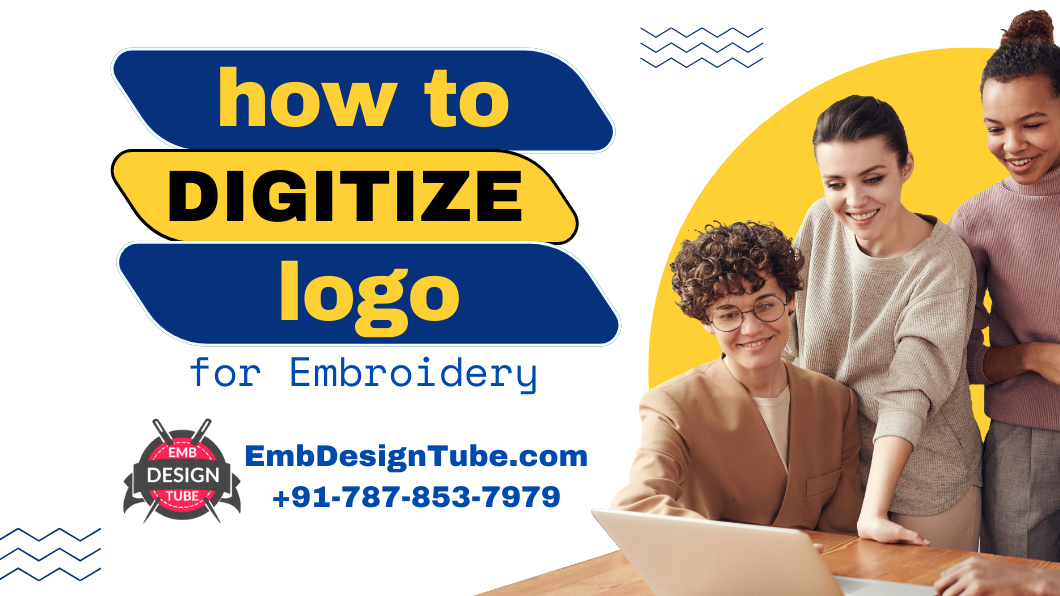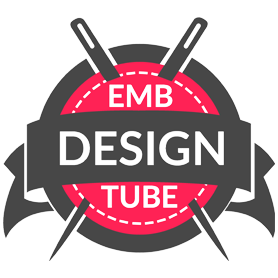21 Aug


0 Comment(s)
189 View(s)
Before you start learning how you can digitize a logo for embroidery, you should first create the logo you want to use.
Using a logo maker tool may be the best option, as it will help you to eliminate any blank spaces and place the logo in the correct size. Then you'll be able to create the embroidery file from the image logo.
Here's how to get started:
Converting an image to an embroidery file
There are several different steps that need to be taken when converting an image to an embroidery file. First, you must determine what type of embroidery machine you are using. This will help you convert the image into the correct format.
Generally, PES files are easier to read and create more accurate stitching colors. You can also convert an image to PES from another format, such as JPG. After you've decided on the correct image format, you should familiarize yourself with the software and know how to use it.
Next, you need to decide which type of image you want to embroider. If the image is a bitmap, you must first process it before you convert it. If the image is a vector, you should merge two or more vector objects to eliminate any overlapping stitching.
Creating soft machine-friendly embroidery designs
If you're looking to create soft machine-friendly embroidery designs for your company, you may be wondering how to digitize a logo. The process can be complicated, and the correct steps must be followed to get the best results. Fortunately, there is always an option you can do to make it a breeze. First, you should always remember the basic steps of digitizing a logo.
The first step in digitizing a logo is uploading it to a digital image editor. Once you've uploaded the image, you can then crop it to remove unnecessary spaces. After that, you need to set a dimension for your logo.
This will determine its final size, and it takes only a few hours to finish, depending on the size of your logo. Once you are satisfied with the logo, you can begin the digitizing process.
Selecting thread colors for embroidery
Choose the correct thread colors to stitch your logo. As with fabric and stitch type, choosing the correct thread color is vital to ensure the best quality embroidery. You will need to make sure that the thread color must match the logo color.
Here are some tips to help you make the right choice. Select the color that complements the design. The thread must be at least one shade lighter or one shade darker than the fabric it will be stitched on.
If you don't know, let us tell you that color temperature can make a huge difference in the overall look of the design. In general, "cool" colors are blue/green, and "warm" colors are orange/red. When selecting thread colors for embroidery, use a color wheel or a guide to existing designs to help you decide which hues will work best. Color matching may not be exact, but it will help the final result look good.
Creating underlay stitches
Creating underlay stitches when digitizing embroidered logos is an important process. While dimensional digitizing, color blending, and top stitching are essential for making beautiful and durable designs, underlay can also help you fix a poorly executed stock design.
Underlay can improve coverage, reduce distortion, and improve texture. It also allows you to easily remove stitches that were inefficient in the initial digitizing stage.
When digitizing a logo for embroidery, the artwork is modified in a graphics program and then imported into an embroidery format using embroidery software. This software then creates a stitch file for the design.
The file contains various types of stitches into it. When digitizing a logo for embroidery, the digitizer must decide which stitch types will be used in the different parts of the design. The "pathing" is the sequence of stitches used to stitch the design.
This step is crucial because it can affect the appearance of the final design. If the pathing is incorrect, it can lead to gaps in the fabric, uneven text, and even the time required by the embroidery machine.
Want to order customized embroidery designs? You can always hire our experienced embroidery designers to create quality embroidery designs for yourself.
